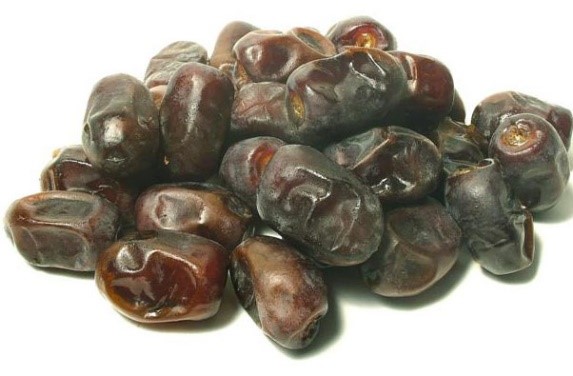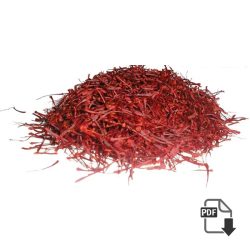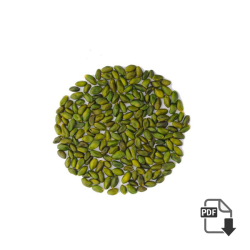— RF Temperature ( Risk factors Temperature ) —
Risk factors Temperature : Pistachio nuts require particular temperature, humidity/moisture and ventilation conditions for this reason, precise details should always be obtained from the consignor as to the travel temperature to be maintained.
The stated travel temperature of 0°C is the ideal temperature for achieving the longest possible storage life, but higher travel temperatures (5 – 25°C) are feasible (depending upon the duration of the voyage), so this product need not necessarily be carried as chilled goods.
Temperatures > 30°C should not prevail for a long period, as respiration of the cargo is otherwise promoted.
Pistachio nuts should not be stowed near heat sources (engine room bulkhead, heated tanks). Above all, they must not be exposed to sunlight, as these results in impaired flavor.
Please for more information or any inquiry click here ……
RF Humidity/Moisture
— ( Risk factors Humidity/Moisture ) —
Risk factors humidity/moisture : Pistachio nuts require particular temperature, humidity/moisture and ventilation conditions
| Designation | Humidity/water content | Source |
| Relative humidity | 65 – 70% | [1] |
| Water content | 6% | [1] |
| 4% | [2] | |
| 6% | [5] | |
| Maximum equilibrium moisture content | 65% | [1] |
Precise details should be obtained from the consignor as to the relative humidity to be maintained during the voyage.
Pistachio nuts must be protected from all forms of moisture (seawater, rain and condensation water), since there is otherwise an increased risk of mold, rot and rancidity. They rapidly absorb moisture from the air and the flavor becomes insipid.
Sodden packing drums or bags must be rejected as seawater, rain and condensation water
Promote hydrolytic/enzymatic fat cleavage, which leads to self-heating as a result of increased respiration.
RF ventilation
— ( Risk factors ventilation ) —
Risk factors ventilation conditions : Pistachio nuts require particular temperature, humidity/moisture and ventilation conditions.
Recommended ventilation conditions: air exchange rate: at least 10 changes/hour (airing)
RF biotic activity
— ( Risk factors Biotic Activity) —
Risk factors Biotic Activity : Pistachio nuts display 2nd order They are living organs in which respiration processes predominate, because their supply of new nutrients has been cut off by separation from the parent plant. Care of the cargo during the voyage must be aimed at keeping decomposition processes at the lowest possible level, so as to keep within limits any losses in quality caused by the emission of CO2, heat and water vapor.
RF gases
— ( Risk factors Gases ) —
Risk factors Gases : In pistachio nuts (particularly when fresh), metabolic processes continue even after harvesting. They absorb oxygen and excrete carbon dioxide (CO2).
If ventilation has been inadequate (frost) or has failed owing to a defect, life-threatening CO2 concentrations or O2 shortages may arise. Therefore, before anybody enters the hold, it must be ventilated and a gas measurement carried out. The TLV for CO2 concentration is 0.49 vol. %.
RF self-heating / spontaneous combustion Oil content:
— ( Risk factors self heating / spontaneous combustion Oil content ) —
● 45 – 54% [1]
● 55% [2]
Because of their tendency to self-heating, pistachio nuts may behave like substances from Class 4.2 of the IMDG Code.
Excessive stack pressure results in self-heating. Oils which have accumulated in the jute packaging fabric encourage this behavior.
Pistachio nuts, especially pistachio kernels, should not be stowed together with fibers/fibrous materials as oil-soaked fibers may promote self-heating/spontaneous combustion of the cargo.
As a basic principle, high oil content (especially in pistachio kernels) encourages the tendency to self-heating.
Fat decomposition in pistachio nuts leads to the risk of self-heating and, ultimately, to a cargo fire.
Fat decomposition may proceed as follows:
by hydrolytic/enzymatic fat cleavage or
by oxidative fat cleavage
— Hydrolytic/enzymatic fat cleavage —
hydrolytic/enzymatic fat cleavage : If the critical water content of the pistachio nuts is exceeded, this promotes hydrolytic/enzymatic fat cleavage. Fat-cleaving enzymes are activated by the elevated water content. The additional action of light and heat may accelerate this process. Free fatty acids sometimes have an unpleasant odor and taste. In the event of extended storage or improper cargo care, these cause the cargo to become rancid.
The free fatty acids formed are consumed by respiration processes in the pistachio nuts to form carbon dioxide and water, a process which is associated with considerable evolution of heat.
Self-heating of pistachio nuts is an extremely vigorous process, as the consumption of fatty acids by respiration processes is associated with a considerably greater evolution of heat than is the case with the respiration equation for carbohydrates.
Here too, as with cereals, the spoilage process proceeds in a type of chain reaction, because heat and water are formed by the fatty acids consumed by respiration, which in turn contribute to an intensification of the process.
The self-heating of pistachio nuts requires only a small seat of moisture, so that within just a few hours heating may occur at moist points for which weeks or months would be required in goods dry on shipment.
Fresh pistachio nuts with high water content tend in particular towards rapid self-heating and may also ignite. Self-heating of pistachio nuts leads not only to a reduction in the utility value of this product (rancid odor and taste) but also has a qualitative and quantitative effect on oil yield.
The color and bleach ability of the oils are also negatively affected. The oil obtained complicates refining of the crude oils in subsequent processing, because higher free fatty acid content makes decolonization substantially more difficult.
Hydrolytic/enzymatic fat cleavage and respiration may be limited by low temperatures; however, this may only be affected to a limited degree during transport. It is therefore important to ensure storage stability by complying with the limit values for the water content of the goods.
— Oxidative fat cleavage —
Food components frequently react with atmospheric oxygen in spoilage processes. Atmospheric oxygen may enter into an addition reaction with unsaturated fatty acids through the simultaneous assistance of light, heat and certain fat companion substances, and possibly also traces of heavy metals.
Rancidity caused by oxidative fat cleavage is particularly noticeable in the case of shelled pistachio nuts, because the shelling process results to a certain degree in exposure to atmospheric oxygen or to the steel parts of the ship or the container walls, if not carefully covered.
It is therefore absolutely essential to store pistachio nuts in the dark and to protect them from oxygen and metal parts, since otherwise they become brown-colored and develop a rancid odor and taste.
RF Odor
— ( Risk factors Odor ) —
| Active behavior | Pistachio nuts have a very slight, pleasant odor. If they are transported or stored for an extended period without ventilation, they spoil and release a strong odor. |
| Passive behavior | Pistachio nuts are sensitive to unpleasant and/or pungent odors. |
RF contamination
— ( Risk factors contamination ) —
| Active behavior | Risk of contamination of other goods by fats and oils. |
| Passive behavior | Pistachio nuts are sensitive to dust, dirt, fats and oils. |
RF Mechanical influences
— ( Risk factors Mechanical influences ) —
Pistachio nuts are impact- and pressure-sensitive. They may suffer breakage. Excessive stack pressures must in particular be avoided.
RF Toxicity / Hazards to health
— ( Risk factors Toxicity / Hazards to health ) —
If ventilation has been inadequate (frost) or has failed owing to a defect, life-threatening CO2 concentrations or O2 shortages may arise.
Therefore, before anybody enters the hold, it must be ventilated and a gas measurement carried out. The TLV for CO2 concentration is 0.49 vol. %.
Danger: pistachio nuts may contain aflatoxin. The molds Aspergillums flatus and Aspergillums parasitic us produce the toxin aflatoxin, which may be present in the cargo as a result of an attack by the above-mentioned mold types.
In general, this is “country damage”, i.e.
The toxin is already present in the pistachio nuts at the time of harvesting. As a rule, aflatoxin is only found in individual pistachio nuts.
If batches intended as a human foodstuff are affected by this toxin, the product can no longer be approved for human consumption.
Pistachio nuts affected by aflatoxin cannot readily be distinguished from the other nuts in a batch. The toxin may be detect.
RF Shrinkage/Shortage
— ( Risk factors Shrinkage/Shortage ) —
Weight loss of up to 1% due to moisture loss may occur.
As pistachio nuts are a relatively valuable cargo, there is considerable risk of theft.
Please for more information or any inquiry click here ……
RF Toxicity / Hazards to health
— ( Risk factors Toxicity / Hazards to health ) —
Insect infestation is possible: mites, cockroaches, saw-toothed grain beetles, flour beetles, meal moths, dried fruit moths and rats and mice may attack pistachio nuts.
Pistachio nuts from the previous year’s harvest have a particular tendency to beetle infestation.
The quarantine regulations of the country of destination must be complied with and a phytosanitary certificate and fumigation certificate may have to be enclosed with the shipping documents.
Information may be obtained from the phytosanitary authorities of the countries concerned.
All Type Of Pistachios
-
Round Pistachio | Fandoghi Pistachio Special price + analysis + sale offer
Round Iranian Fandoghi Pistachio High Quality Only for Export : This type of Pistachio is the least expensive type among all the pistachios. The reason why its price is lower than other types is because of its shape and high…
-
iranian Ahmad Aghaei Pistachio Special price + analysis + sale offer
Ahmad Aghaei Pistachio ( Long iranian Pistachios ) : This type of Pistachio (Long Ahmad Aghaei Pistachio) is one of the popular types. The reason why it is popular than the other type of pistachio is that it has the…
-
Iranian Jumbo Pistachio | Kale Ghuchi Pistachio Special price + analysis
This type of Pistachio is the most delicious type among all the pistachios. The reason why it is tastier than the others is it is fattier. The color of the Jumbo Pistachio shell is naturally light cream. As it is…
-
pistachio kernel Special wholesale price + analysis + sale offer
Producers make Pistachio Kernel from all types of Pistachios. A quality factor for kernels is their sizes. The more the color of the kernel`s second skin is violet and sharp the more it is popular among users. Higher the level…
-
Green Pistachio Kernel ( GPPK ) Special wholesale price + analysis
Producers make Pistachio Kernel from all types of Pistachios. A quality factor for kernels is their sizes. The more the color of the kernel`s second skin is violet and sharp the more it is popular among users. Higher the level…


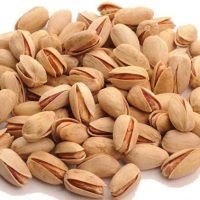
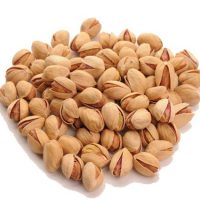
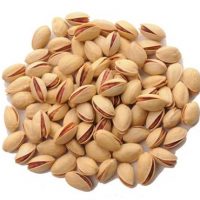
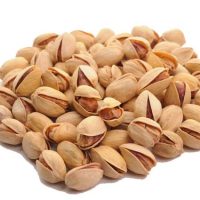
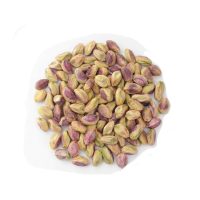
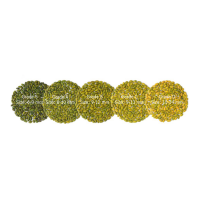
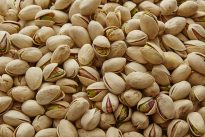
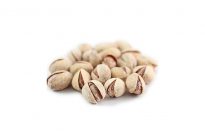
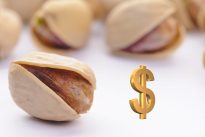
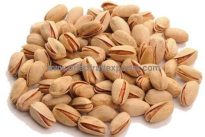
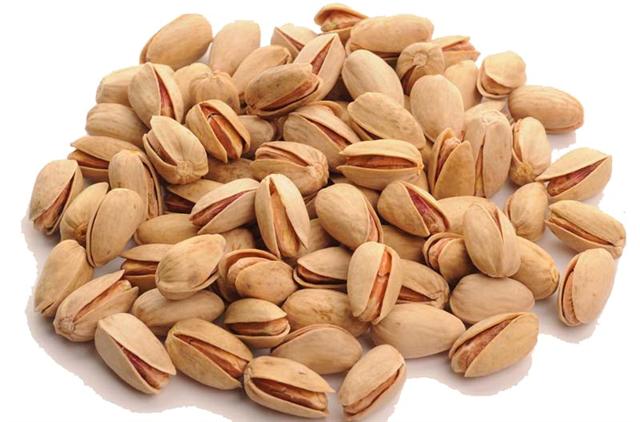
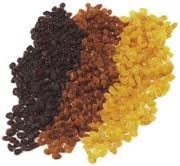 3 kind raisin
3 kind raisin 